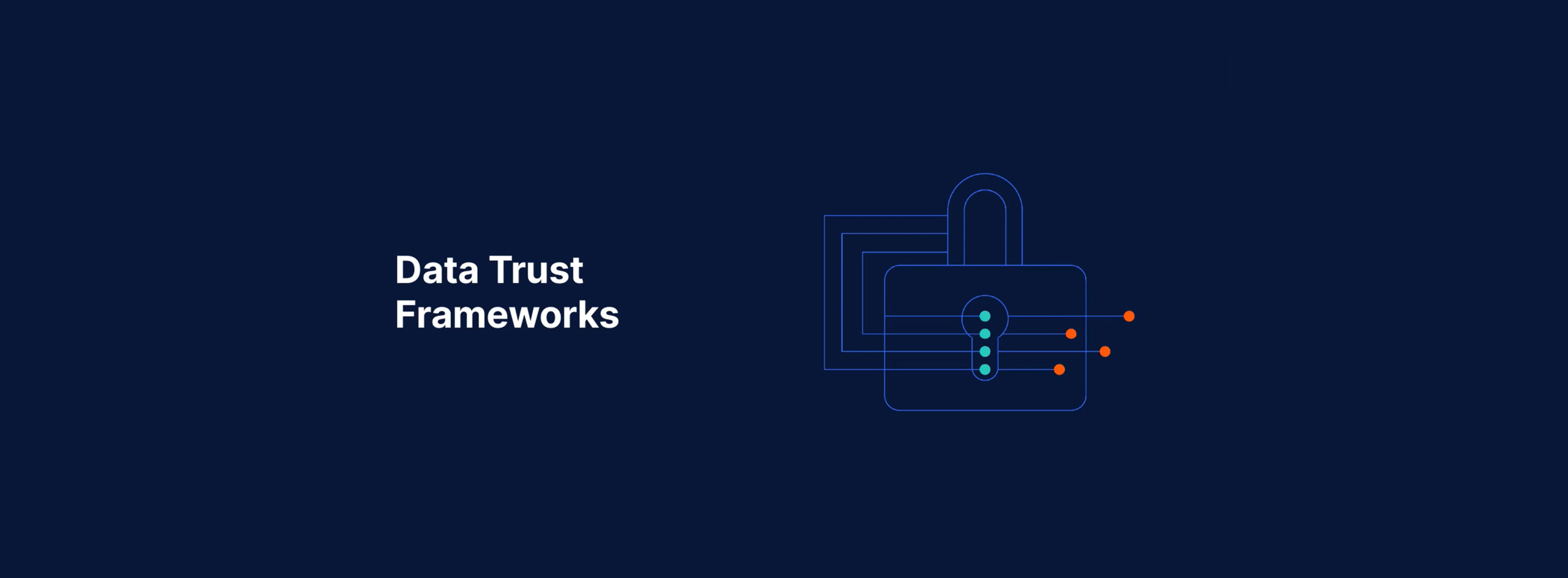Various factors are shaping the safety and security of our global food system, some of which have evolved significantly over the past five years. These are the key factors influencing global food safety, how they have changed, and how data collection, sharing, and utilization can address these issues.
The changing face of regulation, in particular, plays a critical role in shaping global food safety by addressing emerging challenges, improving transparency, and responding to evolving technologies and consumer demands. As regulations become more complex, data becomes even more essential.
Efficient data collection, sharing, and utilization help regulatory bodies, food producers, and consumers adapt to these changes and ensure that safety standards are maintained across the entire food system.
1. Climate Change
Climate change is potentially one of the most influential factors affecting food safety today. Over the past five years, the frequency and intensity of extreme weather events—such as droughts, floods, and wildfires—have significantly increased. These events disrupt crop production, create favorable conditions for the proliferation of pests and diseases, and lead to contamination risks in water sources and soil. The unpredictability of climate change also stresses food production systems, reducing yields and increasing the likelihood of foodborne diseases due to spoilage and contamination.
Climate change has forced governments to rethink agricultural and environmental regulations. Climate policies directly affect farming practices, water use, and land management, which are critical for food safety.
The Role of Data:
Better data collection on climate trends and their impacts on food production enhances forecasting models, helping farmers and policymakers plan for adverse conditions. Monitoring systems that track the spread of pests and diseases, soil degradation, and water contamination can improve early warnings, allowing quicker responses to mitigate risks.
Data collection on compliance, environmental conditions, and agricultural output helps regulators and farmers strike a balance between sustainability goals and food safety. With Data, food producers can better guide policymakers in refining their approaches.
2. Organizational Culture
The culture within organizations, whether they are producers, processors, or part of the supply chain, directly influences food safety. Over the past five years, there has been growing attention on corporate responsibility, transparency, and accountability. Organizations that prioritize safety protocols, continuous training, and collaboration across departments tend to experience fewer food safety incidents. In addition, governments have tightened regulations on food handling, storage, and processing, placing a stronger emphasis on transparency and accountability.
The Role of Data:
Real-time data sharing across organizations about food safety incidents and inspections can improve transparency. By making safety data publicly accessible, companies can build trust with consumers and regulatory agencies. Predictive analytics can also help companies anticipate and address potential hazards before they materialize.
Automating compliance monitoring through data-driven systems can make it easier for companies to track and adhere to regulatory standards. Public data on food safety incidents and compliance can increase transparency and trust in food systems, benefiting organizations with strong food safety cultures.
3. Consumer Habits and Changing Demand
In recent years, there has been a noticeable shift in global food consumption patterns. Consumers are demanding more diverse foods, including plant-based alternatives, ethnic cuisines, and exotic products from different parts of the world. This diversification has increased the complexity of global food supply chains and heightened the risk of contamination from unfamiliar sources.
As consumer preferences shift toward healthier, organic, or plant-based foods, regulatory bodies have had to adapt their frameworks to ensure these new products meet safety and labeling standards. However, rapidly evolving consumer trends often outpace the development of regulatory frameworks, leaving gaps in how new food products are tested and verified for safety.
The Role of Data:
Data collection on consumer preferences can help the food industry anticipate shifts in demand and adjust supply chains accordingly. Robust data on the safety profiles of new food products, including allergen risks and potential contaminants, can inform safer practices. Sharing data between food producers and retailers can reduce the likelihood of foodborne illnesses linked to unfamiliar or improperly handled products.
Access to comprehensive data on product ingredients and manufacturing processes allows for faster adaptation to market changes.
4. Regulations and Cross-Border Standards
In an increasingly globalized world where food products frequently cross borders, differences in national food safety standards create trade barriers. Significant efforts are being made to align cross-border food safety standards to mitigate these challenges and streamline international trade. Organizations such as the Codex Alimentarius Commission, a joint initiative between the World Health Organization (WHO) and the Food and Agriculture Organization (FAO), play a pivotal role in setting international benchmarks for food safety.
Government and trade organizations are promoting the harmonization of food safety standards, these efforts aim to reduce discrepancies between national regulations, facilitating smoother trade and ensuring a consistent level of food safety across regions. Aligning these standards helps food producers and exporters comply more easily with regulations in multiple countries, fostering trust between trading partners and supporting the movement of goods in a safer, more predictable manner.
These collaborative efforts benefit public health by setting a global benchmark and help countries efficiently navigate the complexities of international trade, ultimately supporting economic growth and food security.
The Role of Data:
Data is vital for enhancing food safety regulations and aligning cross-border standards by supporting risk assessment, real-time monitoring, and international benchmarking. It enables comprehensive analysis to identify potential risks, streamlines compliance through digital platforms and promotes transparency for traceability. Data also aids predictive modeling to foresee potential safety issues and fosters collaboration by facilitating the sharing of research and best practices among global stakeholders. Together, these elements help develop science-based policies, preempt challenges, and ensure that food safety standards are rigorous and aligned to facilitate safer international trade.
5. Supply Chain
In recent years, regulations surrounding food traceability have become a major focus, especially in response to global supply chain disruptions and food fraud scandals. Global food supply chains have become increasingly complex, involving multiple stakeholders across different regions. This complexity heightens the risk of contamination at various points in the chain, from production to processing and transportation. Over the past five years, disruptions such as the COVID-19 pandemic and geopolitical conflicts have exposed vulnerabilities in supply chains, affecting the quality and safety of food.
The Role of Data:
Digitizing the supply chain allows for real-time tracking of food products from farm to fork, ensuring traceability and accountability at every stage. If contamination or safety breaches occur, data sharing across the supply chain can enable rapid responses and recalls, minimizing the spread of unsafe products.
6. Organics and Sustainability
Sustainability and organic farming have grown in popularity over the past five years. However, organic farming practices, while environmentally friendly, pose unique food safety risks. Organic foods are often grown without synthetic pesticides or fertilizers, which increases the likelihood of contamination from natural sources like animal manure and unfiltered water.
Regulations surrounding organic certification and sustainability have been tightened in response to growing consumer demand for eco-friendly and organic food products.
The Role of Data:
Better data collection on organic farming methods, combined with soil and water testing, can mitigate contamination risks and helps regulators develop evidence-based policies. Sharing data on best practices in organic farming can help reduce the chances of foodborne illness without compromising the goals of sustainability. Additionally, sustainability metrics can help identify practices that are both eco-friendly and safe for consumption.
7. Green Chemistry
Green chemistry involves designing chemicals and processes that reduce or eliminate the use and generation of hazardous substances. Over the last five years, this movement has gained traction in food production, particularly in packaging and preservatives. While green chemistry is a positive development for environmental and food safety, there is a need for thorough testing to ensure that new substances do not introduce unintended risks.
The Role of Data:
Robust data on the safety of new chemicals used in food production and packaging can help identify potential hazards early on. Collaboration between chemists, regulatory bodies, and food manufacturers is essential to share data on the effectiveness and safety of green chemistry innovations.
8. War, Famine, and Global Politics
Political instability, war, and famine have severely impacted global food safety. Conflicts disrupt supply chains, create food shortages, and reduce the capacity of affected regions to maintain sanitary conditions in food production. Over the last five years, geopolitical tensions (such as trade wars or embargoes) have led to shifts in food import/export regulations, often disrupting food safety practices.
The Role of Data:
Data sharing across international borders can help track food safety risks in conflict zones and identify alternative supply routes. Organizations like the World Food Programme (WFP) and FAO can use data to coordinate relief efforts, ensuring that food supplies reach vulnerable populations without compromising safety.
Global data-sharing agreements can help harmonize food safety standards across borders, ensuring that imports meet safety requirements and that risks are quickly identified and mitigated. Data from inspections and tests at ports of entry can provide early warning signals for potential safety issues.
9. Shipping Routes Disruption
Disruptions to shipping routes, caused by events like the Ever Given blockage in the Suez Canal in 2021, have highlighted the fragility of global logistics. These disruptions can cause delays in food deliveries, leading to spoilage and contamination risks, particularly for perishable goods.
The Role of Data:
Real-time data tracking on shipping routes and delivery times can help reroute shipments to avoid delays. Advanced algorithms can predict potential disruptions based on current conditions, allowing businesses to plan alternative routes or storage options to preserve food safety.
10. Extreme Weather Events
The increase in extreme weather events—hurricanes, floods, droughts—over the last five years has had a devastating impact on food production. Crops are destroyed, livestock is affected, and transportation networks are disrupted, leading to significant food safety challenges.
The Role of Data:
Weather data collection and sharing can help predict extreme events, allowing farmers and food producers to take preemptive action. Early warning systems, coupled with data-driven risk assessments, can minimize the impact of extreme weather on food safety.
11. New Bacteria
Over the past five years, the emergence of new bacteria strains that are resistant to traditional food safety measures has become a growing concern. The evolution of pathogens like Listeria, E. coli, and Salmonella continues to pose new challenges for ensuring food safety.
The Role of Data:
Continuous surveillance and genetic data collection on these pathogens are crucial for staying ahead of bacterial mutations. By sharing this data globally, scientists can develop new mitigation strategies and inform the creation of updated safety protocols. The expanded use of genomic technology has been particularly beneficial in this regard. Advanced techniques like 16S ribosomal RNA analysis provide a more extensive data set and deeper insights than traditional culture tests can offer.
12. Personal Hygiene
The COVID-19 pandemic has had a lasting impact on food safety practices, particularly in the area of personal hygiene. While hygiene practices have improved in many food processing and retail environments, lapses in personal hygiene can still lead to contamination.
The Role of Data:
Tracking personal hygiene compliance through automated systems and collecting data on hygiene-related food safety incidents can help enforce better practices. Sharing data on outbreaks linked to poor hygiene can inform training programs and improve overall food safety.
Conclusion
In conclusion, food safety over the next 12 months is shaped by a complex web of factors, many of which have evolved significantly in the last five years. Data collection, sharing, and utilization play a critical role in addressing these challenges, providing the insights needed to enhance food safety on a global scale. By leveraging data-driven approaches, stakeholders can anticipate risks, respond to emerging threats, and ensure that our food systems remain safe and resilient.
The changing face of regulation plays a critical role in shaping global food safety by addressing emerging challenges, improving transparency, and responding to evolving technologies and consumer demands. As regulations become more complex, data becomes even more essential. Efficient data collection, sharing, and utilization help regulatory bodies, food producers, and consumers adapt to these changes, ensuring that safety standards are maintained across the entire food system.
Advancements in food safety technologies, including advanced data sharing, data analytics, AI and predictive modeling, are transforming the global food market. These innovations enable food producers and government regulators to detect and address potential safety concerns more efficiently, leading to quicker responses and improved quality control. This progress supports compliance with international safety standards and fosters consumer trust, enhancing global trade opportunities and market growth.
In food production, breakthroughs like alternative protein development and precision agriculture are significantly impacting food supply. These methods help reduce dependency on traditional resources, addressing challenges posed by climate change and population growth. The shift toward sustainable practices broadens the market, promotes food security, and encourages collaboration across nations, driving the global food industry toward more resilient and sustainable systems.



